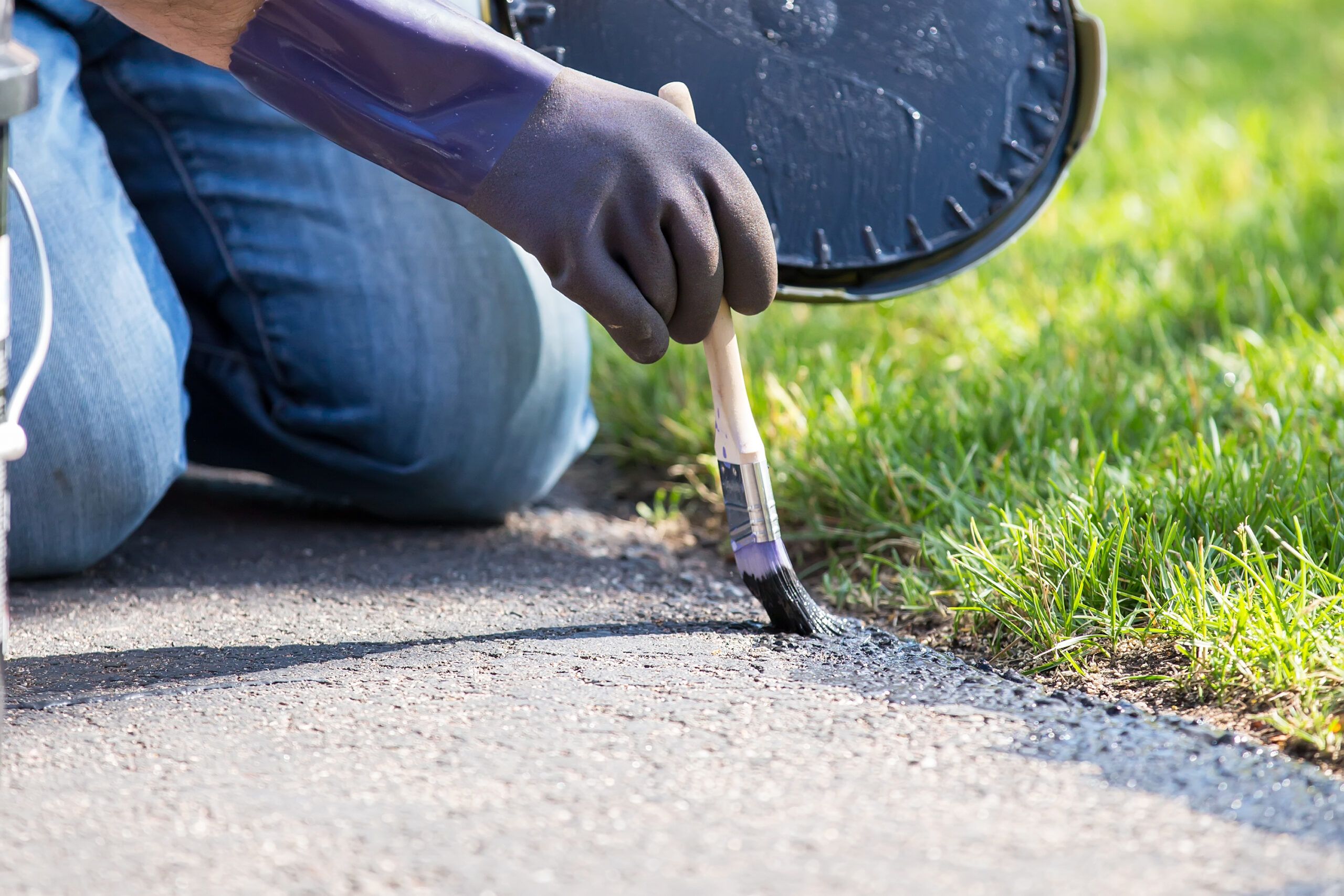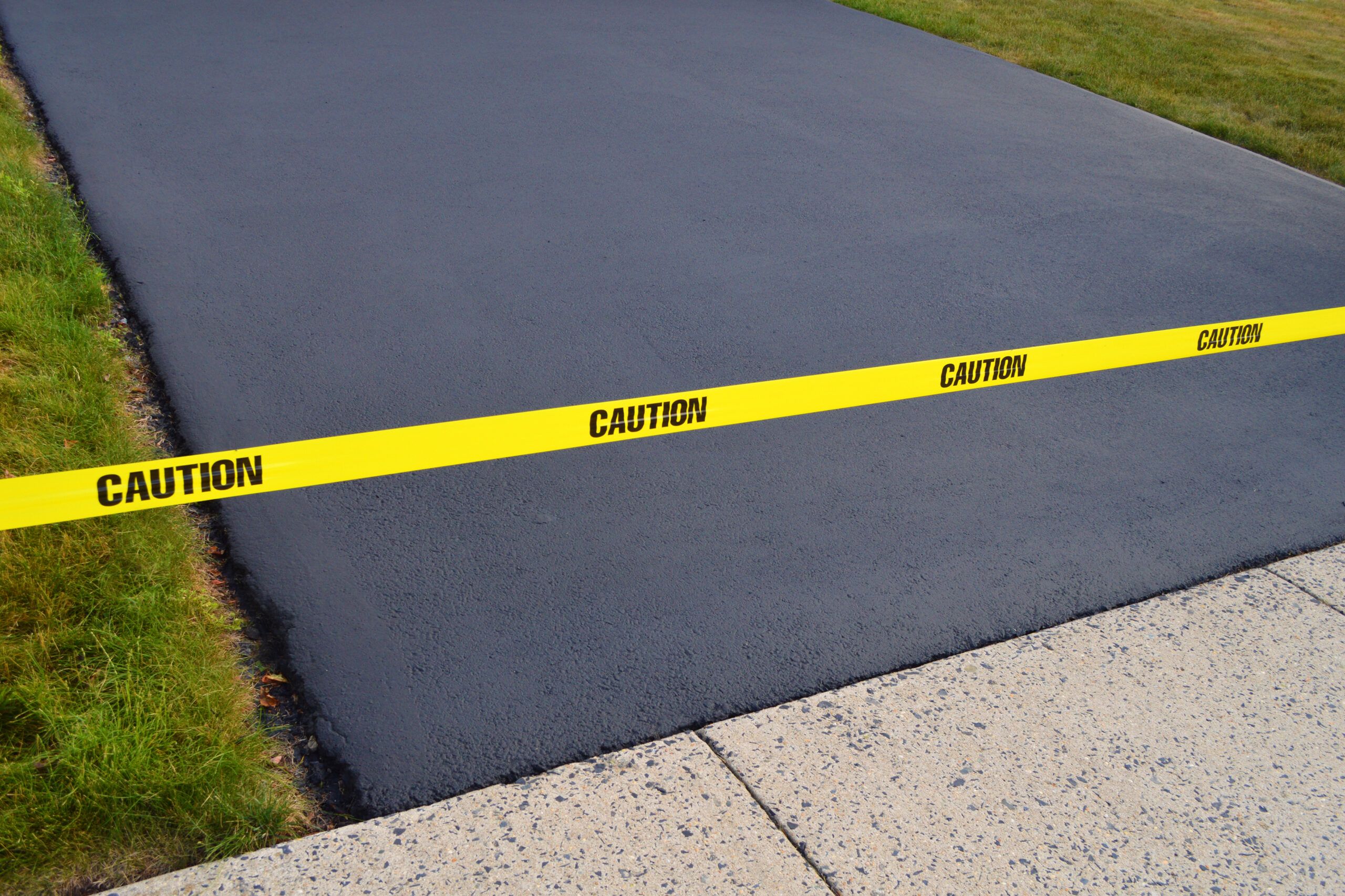Sealing your driveway can extend your driveway’s lifespan. This process creates a protective layer that shields the surface from damaging elements like UV rays, oil, gasoline, and water. In this guide, we’ll walk you through the steps of sealing a driveway, from assessing its condition to applying sealant and maintaining its finish.
Understanding Driveway Sealcoating
Sealcoating your driveway preserves your driveway’s surface by applying a protective layer. This coating creates a barrier that shields your driveway from damage. The sealant fills small cracks and imperfections, creating a smoother surface that’s more resistant to water penetration and chemical spills.
Benefits of Sealing Your Driveway
Sealing your driveway has many benefits, making it a worthwhile investment. Sealcoating shields your driveway from sun damage, rain, and freeze-thaw cycles to prolong the life of your driveway and save you money on repairs and replacements.
Freshly sealed driveways look neat and well-maintained, improving your home’s appearance. Sealed surfaces are also smoother and much easier to sweep and clean, preventing oil, gas, and other substances from penetrating the surface.
Assessing Your Driveway’s Condition
Before starting the sealing process, you’ll need to evaluate your driveway’s condition. This will help you decide if sealing is appropriate and any prep work you may need.
Signs Your Driveway Needs Sealing
There are a few indicators that your driveway needs sealing, including fading color, small cracks, rough texture, and water beading. If your asphalt driveway appears gray instead of black, has hairline cracks, water doesn’t bead at the surface, or the surface feels coarse and pebbles are coming loose, sealing can help mitigate these issues.
When To Avoid Sealing
In some cases, sealing may not be the best course of action, particularly on new driveways, ones with severe damage, or driveways with heavy oil stains. Freshly laid asphalt needs time to cure before sealing and usually doesn’t need a sealant for 6–12 months. Large cracks, potholes, or extensive damage require repairs before you seal your driveway.
Choosing the Right Sealer for Your Driveway
Selecting the right sealer helps get the best results. Different types of sealers are available, each with its own benefits and characteristics.
Types of Driveway Sealers
Asphalt-based sealers are durable and provide good protection against oil and gas spills. Coal tar sealers are known for their water resistance and durability but are not the most eco-conscious decision. Acrylic sealers have good UV protection and are usually used on concrete driveways. Fast-drying sealers are best for those who need to use their driveway shortly after application.
Factors To Consider When Selecting a Sealer
When choosing a sealer, factor in climate, your driveway’s material, drying time, environmental concerns, and longevity. Choose a sealant that can withstand your area’s conditions, factor in how long you can keep vehicles off the driveway, and look for sealers that have a lower VOC, which is better for the environment.
Preparing Your Driveway for Sealing

Preparing your driveway is possibly the most important step for a successful seal coat. This involves deep cleaning and addressing any existing damage to the surface.
Cleaning the Surface
Start by removing all debris and contaminants from your driveway with a leaf blower. Trim grass along the edges of your driveway and apply a degreaser to remove oil and gas stains. Pressure wash the entire surface to remove dirt and grime. Let the driveway dry completely before repairing cracks and applying a seal coat.
Repairing Cracks and Potholes
For cracks larger than ¼-inch, fill them with a crack filler or sealant. For potholes, use an asphalt patch compound to fill them. Allows any repairs to cure according to the product instructions before sealing.
Step-By-Step Guide To Sealing Your Driveway

With your driveway prepared, you can apply the sealant. Follow our steps below to get the best results.
Necessary Tools and Materials
Before you begin, gather the following items:
- Driveway sealer
- Mixing paddle and drill (for thick sealers)
- Squeegee or brush applicator
- Protective gear (gloves, safety glasses)
- Tape or plastic sheeting for protecting adjacent surfaces
Applying the Sealant
To apply the sealant:
- Mix the sealer according to the manufacturer’s instructions.
- Start at the highest point of the driveway and work your way down.
- Pour a small amount of sealer onto the driveway and spread it evenly with your applicator.
- Work in small sections, overlapping slightly for full coverage.
- Apply a second coat if recommended by the product instructions.
Allowing Proper Drying Time
Follow the drying time instructions specified by the manufacturer. Depending on the product and your weather conditions, this typically ranges from 24 to 48 hours. Block off the driveway to prevent use until it has fully dried.
Professional vs. DIY Driveway Sealing
Deciding whether to seal your driveway yourself or hire a professional depends on many factors, including experience and price.
Pros and Cons of Hiring a Professional
Hiring a professional to seal your driveway has its benefits and drawbacks. Professionals have the expertise and experience to access commercial-grade equipment and materials for a better finish. They can also save you time, and some sealants include warranties or guarantees.
However, professionals will charge compared to what you’d spend doing the project yourself. Scheduling is also less flexible with professionals, requiring you to accommodate not being able to use your driveway, giving you less control over the process.
Tips for Successful DIY Sealing
If you choose to seal your driveway yourself, pick a weekend with ideal weather conditions and have a helper to make the job easier and faster. Be prepared to keep vehicles off the driveway for the full curing period and follow the manufacturer’s instructions carefully, working methodically to get even coverage.
Maintaining Your Sealed Driveway
Proper maintenance can extend the life of your sealed driveway and delay the need for resealing. A proactive approach to maintenance can go a long way in preserving this investment.
Recommended Maintenance Schedule
Clean the surface regularly with a broom or leaf blower, washing with a mild detergent every few months. Clean up any oil or gas spills promptly to prevent staining, and inspect your driveway annually for any new cracks or damage. Reseal your driveway every two to three years or as recommended by the sealant manufacturer.
Extending the Life of Your Sealant
For better sealant durability, avoid using harsh chemicals on the surface and distribute the weight of parked vehicles to prevent tire marks. Remove snow and ice carefully to avoid damaging the sealant, and use a driveway mat under vehicles to catch drips and spills.
Common Mistakes To Avoid When Sealing a Driveway
There are a few mistakes that can affect your sealant that you’ll want to avoid. Never apply sealant on a wet or damp surface, and make sure you’re using the right type of sealer for your driveway’s material. Apply thin coats as opposed to one thick coat and allow for adequate drying time between coats and before use. Following these steps and avoiding mistakes will help you get a proper seal coat on your driveway.

